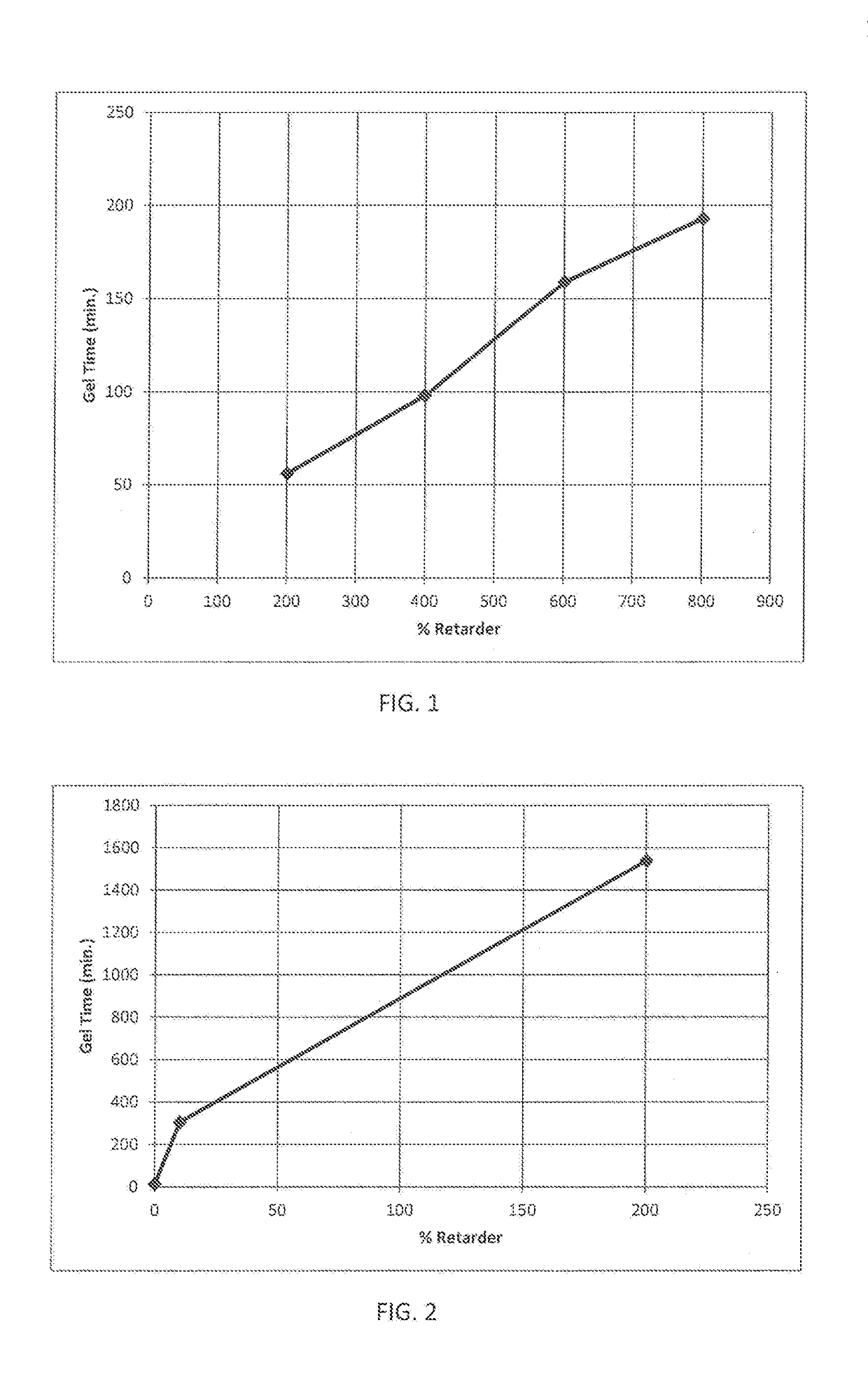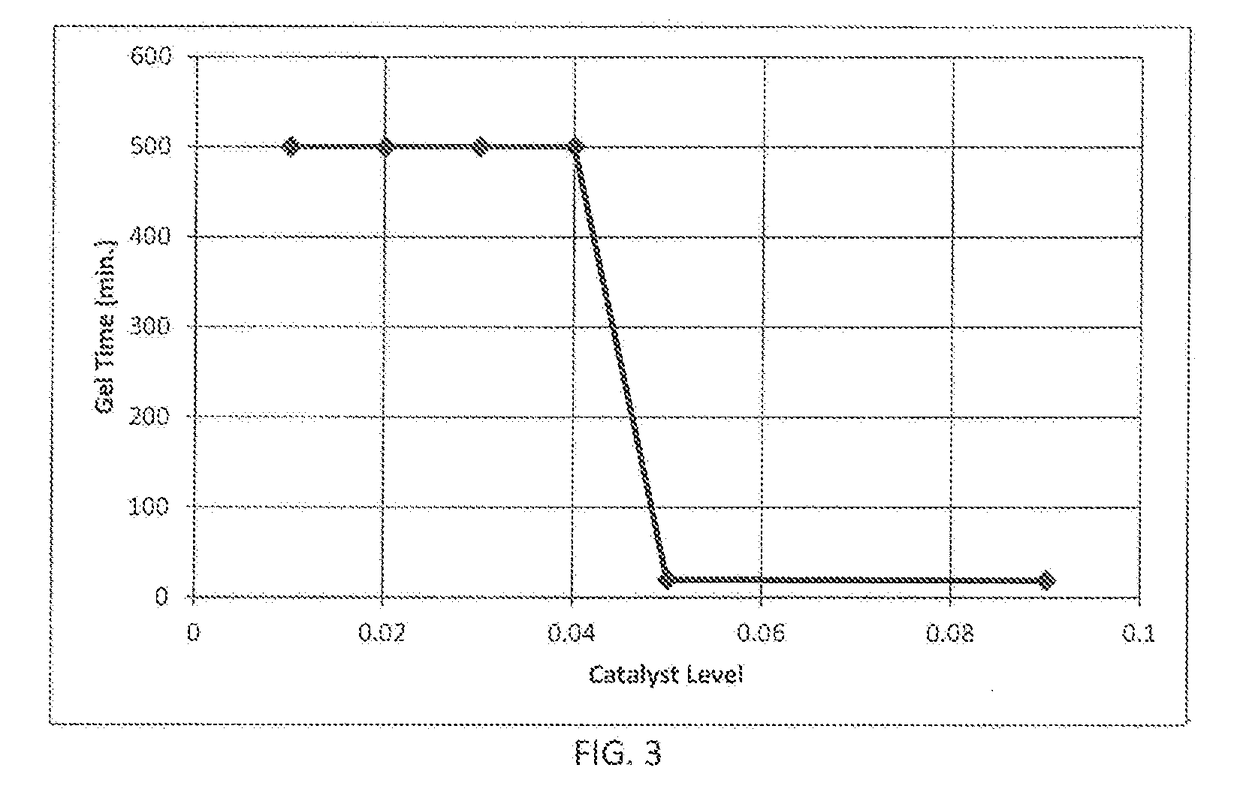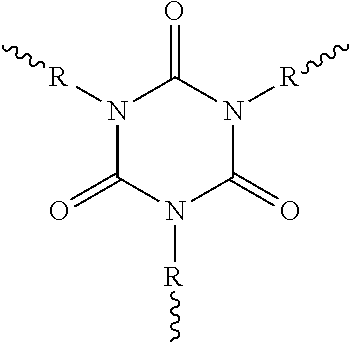Polyisocyanurate based cement for wellbore fluid loss prevention
a technology of polyisocyanurate and cement, which is applied in the direction of drilling composition, chemistry apparatus and processes, etc., can solve the problem of unworkable control of the reactivity of two-component polyurethane based cemen
- Summary
- Abstract
- Description
- Claims
- Application Information
AI Technical Summary
Benefits of technology
Problems solved by technology
Method used
Image
Examples
examples
[0094]The non-limiting and non-exhaustive examples that follow are intended to further describe various non-limiting and non-exhaustive embodiments without restricting the scope of the embodiments described in this specification. All quantities given in “parts” and “percents” are understood to be by weight, unless otherwise indicated. The following materials were used in the Examples described herein;[0095]Isocyanate A a solvent-free polyfunctional aliphatic polyisocyanate resin based on hexamethylene diisocyanate (HDI); low-viscosity HDI trimer; NCO content of 23.0%±0.5; viscosity of 1,200±300 mPa·s @ 23° C., available from Bayer MaterialScience as DESMODUR N 3600;[0096]Isocyanate B a solvent-free aliphatic polyisocyanate resin based on hexamethylene diisocyanate (HDI); HDI trimer available from Bayer MaterialScience as DESMODUR NZ 1;[0097]Isocyanate C a solvent-free, low viscosity, aliphatic prepolymer based on hexamethylene-1,6-diisocyanate (HDI) having an NCO content of 6±0.5%, ...
examples 1-37
[0114]Compositions 1-37 were prepared by mixing the components in the amounts listed in Table 1 (amounts are normalized to 100 by weight).
[0115]The compositions were evaluated for gel time as follows: the Gel time was determined by using a GARDCO GT-SHP “Hot Pot” Gel Timer. 100 grams of the composition was poured into an aluminum cup and placed into the “hot pot” of the gel timer that had already been stable at the cure temperature. The Gel Timer had a motor that rotated a stirrer that was inserted in the composition. As gelation cured, drag eventually exceeded torque and the motor stalled. The time at which the motor stalled is the reported Gel time in Tables I—below.
TABLE IEx. 1Ex. 2Ex. 3Ex. 4Ex. 5Isocyanate AIsocyanate BIsocyanate C39.7939.639.4139.4139.76Isocyanate DIsocyanate EIsocyanate F59.6959.4159.1159.1159.64Isocyanate GDefoamer ADefoamer B0.50.50.490.490.5Catalyst ACatalyst BCatalystretarderCatalyst C0.990.1InhibitorCatalyst D0.1Catalyst E0.5Catalyst F0.02Plasticizer0.89F...
PUM
| Property | Measurement | Unit |
|---|---|---|
| temperature | aaaaa | aaaaa |
| temperature | aaaaa | aaaaa |
| time | aaaaa | aaaaa |
Abstract
Description
Claims
Application Information
 Login to View More
Login to View More - R&D
- Intellectual Property
- Life Sciences
- Materials
- Tech Scout
- Unparalleled Data Quality
- Higher Quality Content
- 60% Fewer Hallucinations
Browse by: Latest US Patents, China's latest patents, Technical Efficacy Thesaurus, Application Domain, Technology Topic, Popular Technical Reports.
© 2025 PatSnap. All rights reserved.Legal|Privacy policy|Modern Slavery Act Transparency Statement|Sitemap|About US| Contact US: help@patsnap.com



